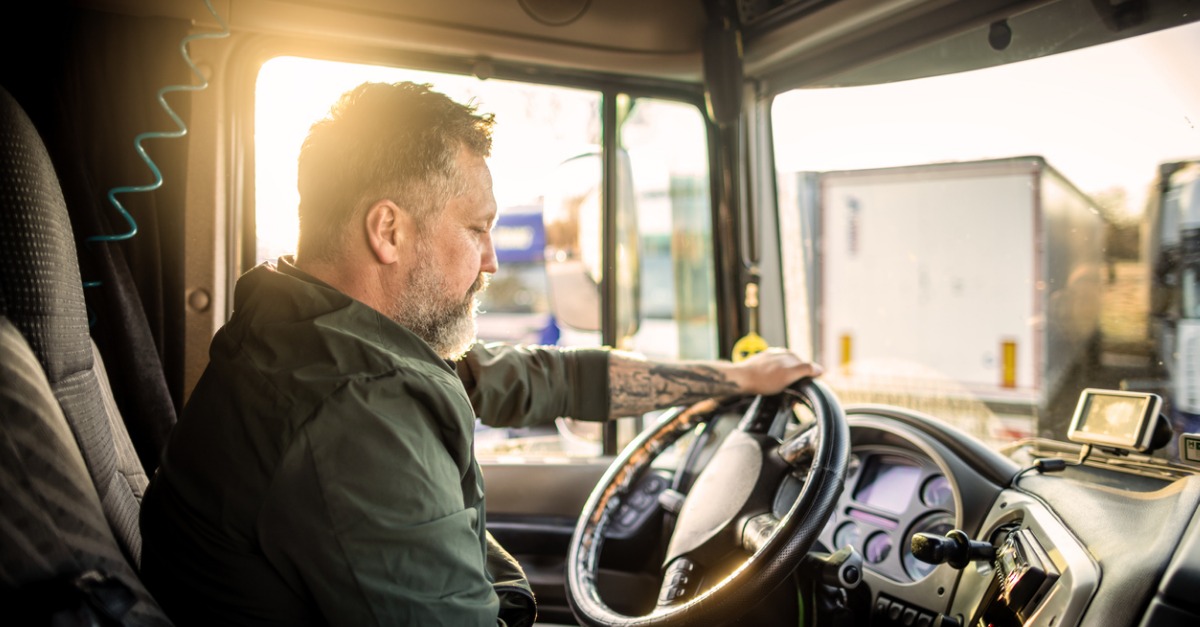
With so many carriers looking to hire new truck drivers, you may find yourself wondering what driving a semi truck would really be like. It’s not your typical 9 to 5 job where you wake up, go to an office, and stare at your computer screen until the work day is over. Driving over the road (OTR) can be challenging, but it’s also interesting and even fun!
What happens on a normal day as a trucker?
During a typical over the road run as a truck driver,, your day may look a little like this:
- Wake Up: After getting several hours of sleep in your cab, you can start by having some coffee and breakfast. You can even get a shower if you’re at a truck stop with shower facilities.
- Pre-Trip Inspection: Right before you get on the road, it’s important to perform an inspection of your vehicle to make sure it’s safe to drive. If you find any issues, report them immediately. Otherwise, you’re ready to start driving.
- Driving: You’ll then spend a significant amount of time driving. This can mean heavy city traffic or wide open roads on the plains, or everything in between.
- Break Time: Every 8 hours, you have to take a 30 minute break, per the FMCSA. You can, of course, take other breaks as needed. Any breaks should include time outside of your cab stretching your legs and getting some exercise or fresh air. Eating a meal or snack is also a good idea so you can keep your energy up.
- Route Stop: After a period of driving, you might get to a stop on your route. This can include dropping a full trailer with a receiver and picking up an empty or waiting while the freight you hauled is unloaded.
Driving: Once you’ve made your stop it’s time to get back on the road. - Find Parking: As the day ends, and your driving time approaches its limit, it’s time to find parking for the night. As you get more familiar with the various truck stops and rest areas, you’ll figure out the best time to find parking.
- End of Day Paperwork: Complete your logs and any nightly inspections or paperwork once you’ve secured parking.
- Dinner: Once you’re all done with work and filling out forms, you can take care of dinner. Many truck stops offer food options, but you may find it healthier and cheaper to bring your own food, at least for some meals.
- Free Time: After dinner, it’s your time to do whatever you want. This can include reading, watching movies or television, doing laundry, or socializing with others at the truck stop.
- Bed Time: Keeping in mind the 10-hour sleeper berth rule, you’ll need to get back to your truck with plenty of time to get ready for sleep before you can start the next day.
How often do you go to weigh stations?
This depends entirely on your route. Commercial drivers are required to stop at any and all weigh stations along their route. So when you are planning your trip you will know ahead of time how many truck scales you will encounter on a given day.
How do you manage detours?
Hopefully detours can be planned in advance when you’re figuring out your route. But if there is a surprise road closure, bad weather, or some other issue that causes an unexpected detour, the best thing to do is to contact your employer and let them know and then pull in at the next rest area to figure out your next move. It is always better to take a few minutes to determine the safest and fastest route to your destination rather than wing it or just follow detour signs.
What's the process of loading and unloading?
Drop & Hook
This is a common, and very efficient, way of loading and unloading freight. You essentially drop a full, sealed trailer in a yard or at a door and pick up another trailer (typically empty). Your paperwork will often be signed or stamped by a guard at a security gate, so you don’t need to wait for anyone to be able to get back on the road.
Live Load
Live load is another very common process where the driver sits and waits for lumpers (freight handlers who load and unload the trailers for truck drivers) to load or unload the truck. This can be more time-consuming than drop & hook, but the downtime can offer an opportunity for a meal or snack, trip planning, or even some stretching or exercise as long as you stay near the loading dock.
Touch Freight
This is less common for OTR truck drivers. In this case you would be unloading the freight yourself. This is mostly done by delivery drivers, but can still occasionally be done by long-haul truckers. This is also not as efficient as Drop & Hook, but not having to wait on warehouse personnel to unload your truck can be great if you’ve got other stops on your route and the warehouse staff are busy with other loads.
Get in the Driver's Seat - Download TF1 Now!
With over 100,000 CDL jobs available annually, TransForce Group is the #1 choice for drivers. Create your profile now to start receiving alerts for jobs that match your personal and professional goals.

